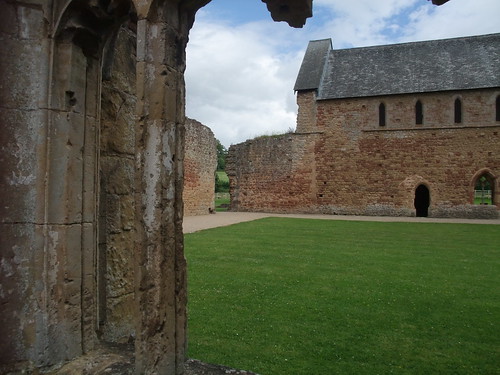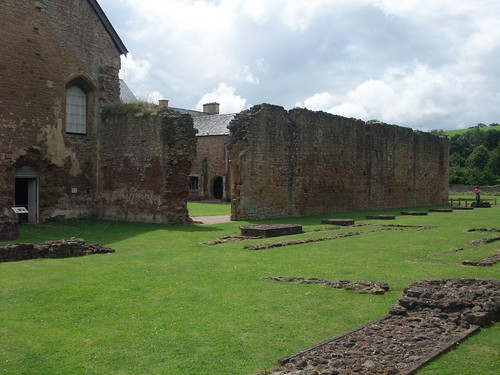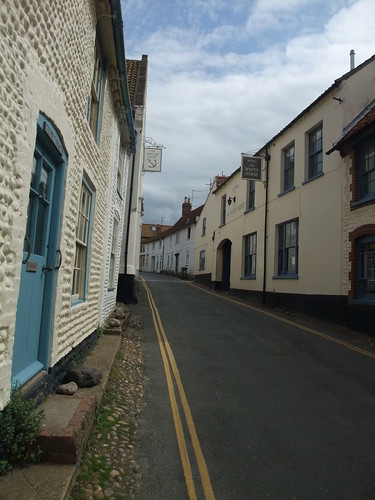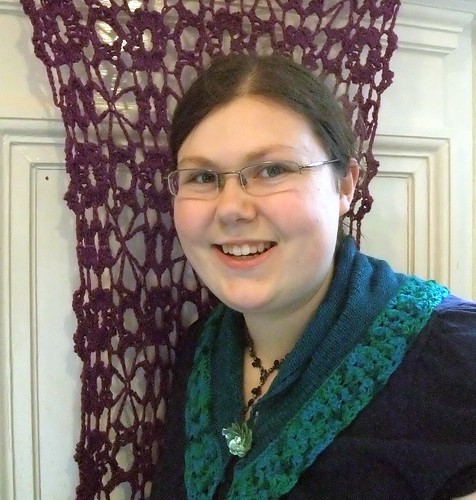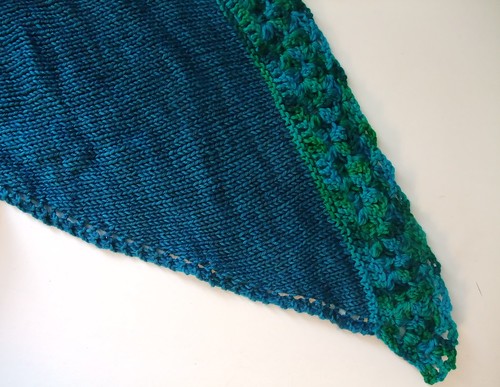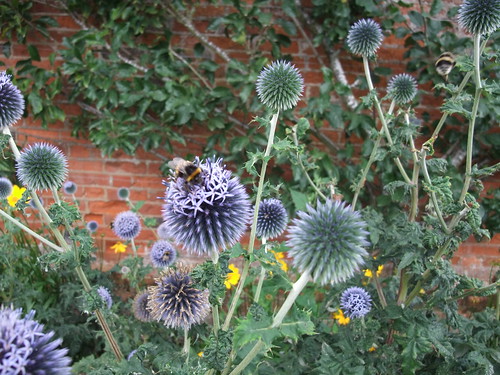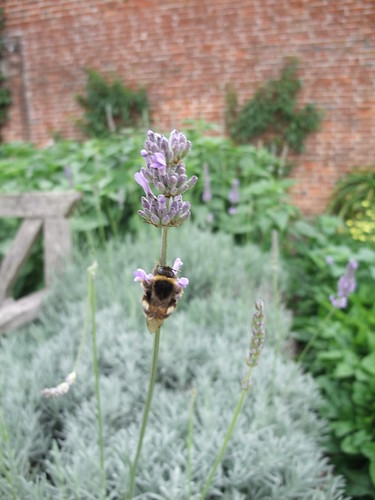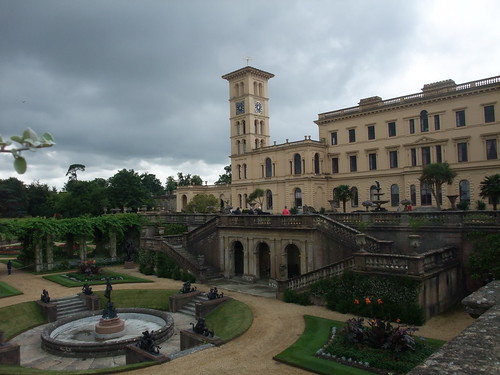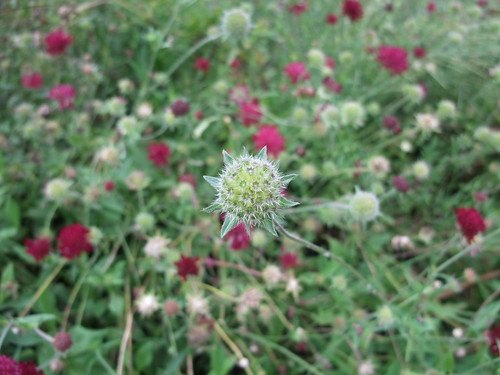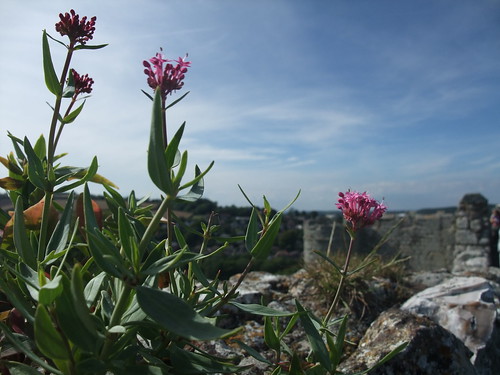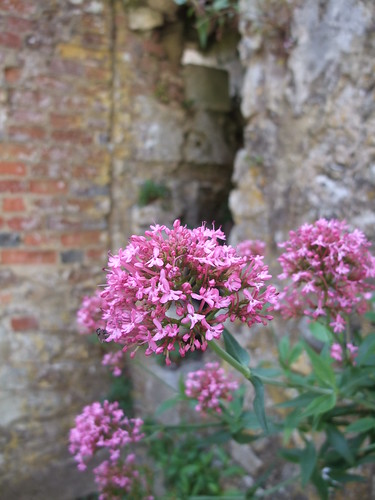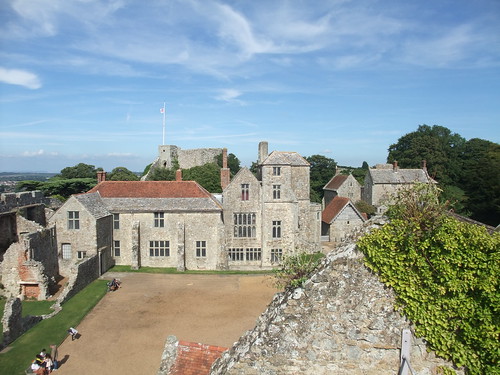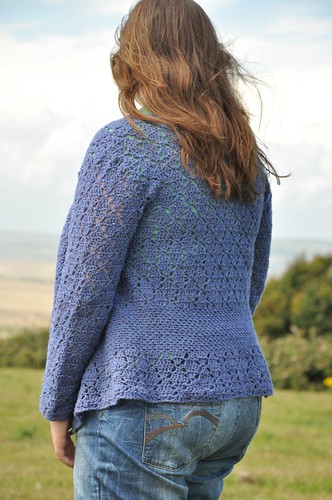I've been a busy bee the last couple of weeks, rewriting Esmée and then formatting the pattern, drawing charts and a schematic, and getting photos. But it is finally done and released!
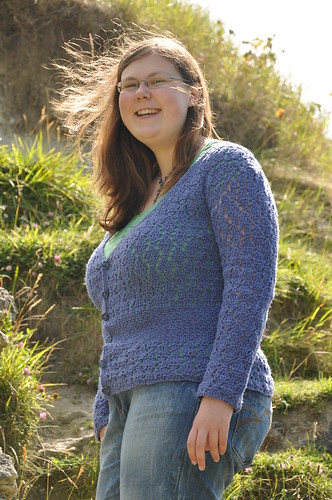

The blurb from Ravelry:
The Esmée Cardigan is a shaped lace crochet cardigan.
The first version of this cardigan was published in Inside Crochet magazine in the January 2011 issue, which is available as a paper copy, a digital copy on yudu.com, or as a pdf from KAL media. This version is in UK terminology.
As there were considerable errata problems with the original published pattern, it has been completely rewritten in US terminology, with charts, a detailed schematic and measurements, and fit alterations. This version also includes instructions for a 54in size (as well as 30-50in as in the original pattern). This pattern is available to buy as a pdf download from Ravelry, and comprises 11 pages.
A sample was made in Jamieson and Smith 2 Ply Jumper weight in blue. Although aesthetically it is very similar to the original pattern, there have been several changes in the construction of the cardigan, to try and ensure a better fit - in particular, sleeve shaping and placement of neckline shaping.
Some other details that were too long/didn't really fit the Ravelry blurb:
If you're wavering between buying the Inside Crochet version or this new Ravelry download version, then I'd urge you to buy this new pattern. Not just because I get the money from it, but because I've put a lot of work into making this a really good pattern, with lots of features that weren't/couldn't be featured in the Inside Crochet version for various reasons (space, style, I hadn't thought of them at the time). There are also various errata in the Inside Crochet pattern which, though I think I've now written out corrections for all of them on the Ravelry pattern page, do change the flow of the pattern. These errata are also all numerical - in that they represent places where the numbers of the pattern were off. If you think of a pattern as a giant formula for making a cardigan, these were places where the formula was broken - where the numbers given would not work with the cardigan as made. With the corrections, you have the right formula and then create the cardigan
But what I've endeavoured to do with the rewritten pattern is fix areas where the cardigan didn't fit properly. This isn't a numerical errata problem- the numbers were all right, but there are places where the back was a bit wide or the cardigan fell off the shoulders. These are things that I only discovered once people started making the cardigan, and I made my own version. When I was setting out to publish the pattern, I thought that it would be a waste just to republish a pattern that evidently didn't work on all sizes - problems that are minuscule on the Size 34in sample size are much larger on the bigger sizes - such as falling off shoulders etc.
So I went back to the very beginning. I made gauge swatches, I made lots of schematics based upon the
Craft Yarn Council's Women's Size Charts and I wrote out all of the body instructions as based upon the numbers that I'd come up with for the schematics. Then I held my breath and crocheted a 42in sample - one that would fit me. And it fitted, all the problems that I'd had before - the back being too big, the shoulders falling off, seem to be solved. I then worked on a new sleeve cap and sleeve shaping design, and added those on. These seem to work too.
I then drew lots and lots of charts to try and explain the potentially confusing parts. As a visual crocheter, I rely a lot on charts and was somewhat disappointed that Inside Crochet didn't include the charts that I'd sent with the pattern (although they were a bit rubbish). All the charts in the Ravelry pattern are hand drawn - I decided to do this rather than doing them on the computer as it was easier both to do and to correct mistakes. As I go along, I always draw charts for the tricky bits (neckline shaping!) and so I'm very fluent in hand drawing charts. I found some good felt tips to draw them out and I think what I've drawn is very clear - in an ideal world, of course I'd like perfect, computer drawn charts. But I couldn't find a way to computer draw them without them looking very pixelly, and being difficult to resize.
Anyway, this version of the pattern should be a big improvement. The sample is truly a joy to wear - it's possibly the first crocheted cardigan that I've made for myself where I don't sit and mentally edit what I would change with it while I am wearing it.

My Dad took the photos for me in the Isle of Wight. As you can see from the photos, it was very, very windy! In most of the photos, my hair looks awful, though my Mum was on hand with a brush every time it got too out of hand! It was a really beautiful location - near St Catherine's Oratory. There are lots more photos of the cardigan in a set I've made on
Flickr.
I think that's all I want to say about the cardigan now! I'm planning a workbook/textbook/primer (?!) on crochet lace cardigans- how to fit crochet lace into schematics, working out how to decrease crochet lace, that sort of thing. I've also got quite a few stitch patterns that I want to work with to explain all this. But it's very intimidating (the idea of trying to teach and explain something rather than just write a pattern), and I'm not sure if I have time to do it. However, it is the sort of information that I would like to be out there and available, and well, someone's got to do it!







